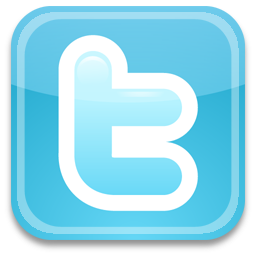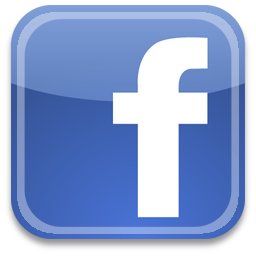Selected Work
by Marilyn R. Rosenberg
Part of "Illuminated Script": a SCRIPTjr.nl special section.
Concept starts with a new irritation, a bite of memory, or a triggered reference; there is a glimpse, or a ghost of an old idea. Sometimes there is a collaboration with another person, also a stimulant.
Process begins with the manifestation of the hint of this concept, ready to expand, but to be contained in an individual product, (to be recorded as an individual document, possibly in a sequence), folded or flat. Starting with paper, ink and gouache and/or computer images, poems and drawings begin. Original photos and photocopies of paper works or original photos taken in the surrounding world, is often the next step. Prints, photocopies, slides, as well as partly completed paper works themselves, are often scanned into the computer. Now, all, or selected computer images are either printed on paper, to be used later, or become computer collage images, waiting.
Women are always included, sometimes highlighted with specific reference, sometimes hinted at, especially older women. As before, the Rosefish, an ocean perch abundant in cooler deep waters of the North Atlantic to Cape Cod, is the symbol for Marilyn Rosenthal Rosenberg. There are varieties of other fish in various appropriate places, which for decades, are the metaphors for groups, family or specific personalities. The name of a fish gives the clue to its reason for being in a piece. Sometimes a mirror images are implied as reflections in the form of reverse numbers and words; implication of reflection seems to facilitate the merging of forms, ideas from the real into the imagined world. This is the diffusion of space and time edges. Hints of splinters, and actual fragmentation, are everywhere. Broken unity and hesitations in continuity are concretely expressed by the fragmented circle. The complete circle, or its variation, the egg, that symbol of life and renewal, convey continuation. Objects of daily experiences are in their original or altered symbolic states. Sometimes images of the uninvited tenant mouse appears. Bone imagery is clearly present. Shadows arrange themselves. Water as theme often appears: remembering, seeing, hearing the powerful sound of the country stream/river/creek in the sounds of the city are noted; implied, the water tower containers and fire hydrants have hidden water available; rivers or showers show running water.
Layering of the fragmented concept develops, all over the single page or many pages, simultaneously. Merging, slicing, splintering, cutting and pasting, distorting, altering sizes, result in a transformation of the expanding content. Abstracted narratives, jumping around in time, re recorded, containing various mundane observations which include hidden life situations are along side exposed sad or joyous occurrences. Dense and intense, some of the visual poems/drawings and artists' books/bookworks seem to have the qualities attributed to private meditative objects; journal and diary keeping record the layered fictions mixed with distortions of reality. Feelings are recorded as pictographic monographs. Calligraphic marks/letters recount one side of abstract conversations. Rants are interspersed with notations of live memories and long dead hopes. Scattered passages of color mixed with mysterious word segments indicate the sometimes intense living of an internal life.
Rather than describing images, words are often united with image to become a new image/visual poem. Some visual poems are filled with indecipherable language, Asemic Poetry. Calligraphic drawing marks record birth and/or death events with talks to the unborn, newborn and dead, in a dense language only they might understand. Ideogrammatic language is the language without known language, the language before written language, the language beyond any language. Fragmented English/American words are pushed to unite with ordinary images which accompany completed words. Numbers hint at assigned phone, account or social security numbers. Ghosts from the past and shadows in the present playfully appear and reappear in code, as numbers, as fish, as slivers of illusion. Recurring images and layered words repeat within different poems, each poem uses each differently to tell a unique story. Questioned is reality and fantasy. Life continues.
Interfolds is the process of the infolding of conceptual ideas with images, language, symbols, fable, allegory and metaphor, folding in on one another. Shards merging from altered past themes are welded to current irritants and teased with pleasures. Regardless if the pages are unbound or bound, individual or sequential, each page contains layers of visual and/or verbal imagery. Within the individual or sequential drawings/poems, as with the pages, all the ingredient are interfolded.
Gouache painted segments, and ink, and pencil are color marks; noted are the crashing memories rolling onto the winter beach, or hidden in corners. Often, joys are bursting out. Questioned is fantasy and reality. Pages are sometimes repeated with variations or dramatic differences. Many works can stand open, in more than one configuration and be read in more than one direction; seeing is both forward and backward, up, down and around.
There is the diffusion of space and time edges. Pasted papers are torn or cut from other areas of a started bookwork; they seem to be torn away thoughts, as the flotsam and jetsam of real, remembered situations, the driftwood fragments. Often these appear in other spots in the same work; holes, cut out sections, cut off edges make various shapes, always related to the contents. Cut-outs that happen, in the sculptural bookworks, are an illusion that is implied in the editions. Fragmentation is everywhere. Looking through circles/holes/cracks, in the pages, to the immediate past and anticipated instant future, asks the reader/viewer to begin to complete the work!
The page, is it drawing or poem? Individual pages, or a group of pages have reference to some aspect of the book's physical structure and personality, and reference that in the content. Sometimes the gutter crease in a book is emphasized as sequential imagery, or the rows of holes of the spiral binding is highlighted or the accordion folds/walls or torn pages/tears, or cut out windows or fold outs (actual or implied) are repeated. The past pages, in current or old works may become part of the present poem. Lists are cumulative. The book often becomes sculpture; the two dimensional pieces have their three dimensional sisters. The three dimensional often find they have both two and three dimensional cousins on paper and in digital space. All of the hybrids of new and old concepts, in all forms, are individuals, but are part of an ever evolving family of concepts, with various themes in various series, and each is often in more than one ongoing series.
Interacting within themselves and with the viewer/reader -- content, vehicle, form, medium, and word, in editions or in unique works, within a concept, pull together merging the themes and the means. But continuing survival may be the underlying subject. As phantoms reappear in the grid, fears and imagined fabulous possibilities, connected to the future, continue.







 SCRIPTjr.nl
SCRIPTjr.nl